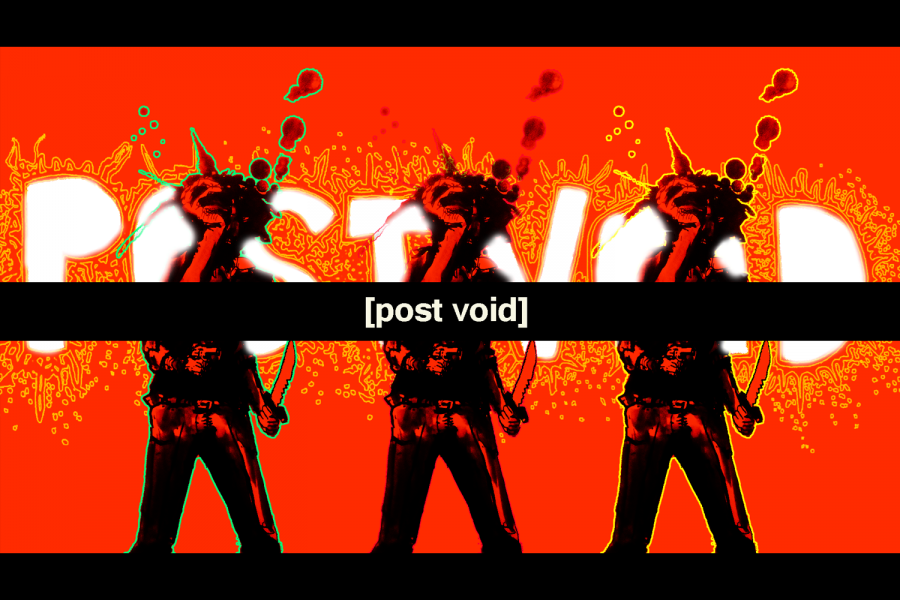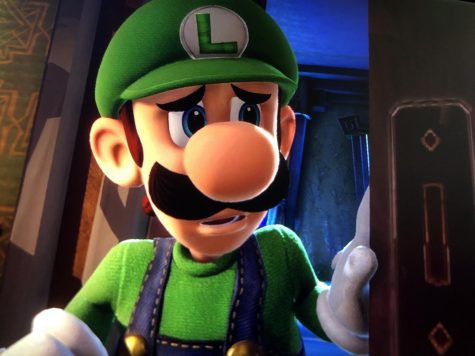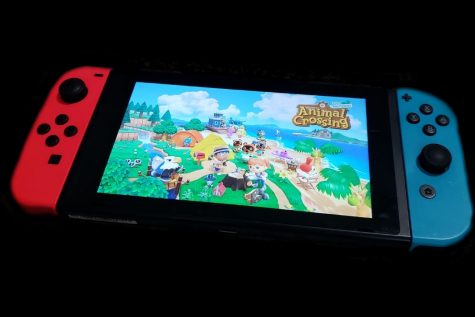‘Post Void’ a thrilling, hypnotic PC experience
Categorized as a first-person shooter, “Post Void” proves to be much more through the use of its design and differentiated mechanics that entice players to learn how to play its way. Users on Steam compared the PC game to “Doom,” “MTV animated music videos” and “Hotline Miami.”
00:03. Move forward. 00:02. Survive 00:01. Kill.
Released on Steam in August, “Post Void” tasks players with shooting as many enemies as possible to gain life as a timer ticks down, and their health is depleted. Developed by Y/CJ/Y Games, the first-person shooter costs $2.99, with a 33% launch discount included.
With such a low price tag, many consumers may disregard the game before giving it a chance. However, “Post Void” proves to be a wildly fun and challenging game for those willing to spend time learning its mechanics and how to navigate its vintage environment. A fast-paced action adventure, the game is a mix of colorful pixel graphics and retro gameplay. It is reminiscent of 1990s’ games of the same genre and is great for PC gamers who want to experience an old-fashioned, yet unique game.
Warning: “Post Void” is a mature game with blood and violence. As the player races across each of the stages, an idol in the player’s left hand stores health and drains until it is empty, forcing them to start over. Killing enemies replenishes health and adds to the player’s overall score, along with number of headshot kills, hits taken and accuracy. The goal is to make it to the portal at the end of each level by maintaining health. And while this is the extent of the gameplay, each level ramps up the difficulty by adding new enemies for the player to combat and progressively making the maps harder to traverse.
The game begins with a short tutorial to introduce the odd controls. Of course, the WASD keys are to move, and the space key is to jump, but the game adds an interesting mechanic that allows the player to slide with the Shift key. Players can reload with the R key and quit with the K key. Being fairly new to PC gaming, it took practice, several deaths and a few breaks to adapt to how the game functions. Although there is a learning curve, dying and replaying levels is a big part of the game and is kept fresh by the somewhat randomized maps.
“Post Void” is split into acts, similar to a play. A throw-back to simpler games of the past, the story is sparse and sprinkled throughout the game. While initially not a feature games would be proud of, “Post Void” makes it clear why the player is there and why they should stay. Additionally, the combination of the rock-heavy score and abundant enemies lets the player know the strain of their situation. The story–made up of poems–allows the player to interpret the abstract lines and is enhanced by the chaotic music that leaves players rushing to beat the stages.
In a game like “Post Void,” determination and precision are key for a world abundant with pandemonium. Players are able to either strategize their way level to level or mindlessly march through the game. When advancing to the next stage, the player is prompted to choose between one of three upgrades, including “Big Idol,” where the liquid capacity of the idol is increased, or an upgrade that slows enemy projectiles as well as weapon choices, such as a shotgun, uzi and a knife. The enemy designs are diverse and their attacks vary, from biting to shooting back at the player.
Although a rushed and quick play, the game utilizes the same tactics that make it feel dire to encourage the player to strategize. “Post Void” is a wild, intrusive game in the best way possible because it keeps players invested while simultaneously providing an inherently difficult game to figure out. Players are urged to not linger on mistakes or look back–the very things the game provokes one to do. Not only a smart way to create conflict for the player, it builds upon the already tense environment that makes the game its own.
And while the gameplay works most of the time, there are two main issues with the game that lie within the overall aesthetic and game design. It is no secret the game is a violent, bloody experience with the use of flashy, bright lights, warranting a warning on its Steam page telling potential players it may incite seizures for those with photosensitive epilepsy. Despite this, gamers willing to bare with the unsettling graphics will learn quickly the environment is not only enhanced by the lights, but they are crucial for the game’s atmosphere. One reason the game works so well is the thrilling, electrifying graphics that help build the game’s stressful feeling.
Along with the odd controls mentioned above comes a somewhat annoying mechanic: when in front of an enemy, it is hard to turn around, meaning an enemy can easily sneak up behind the player, making it nearly impossible to move forward or avoid dying. This especially becomes a problem when multiple enemies cluster while the player attempts to progress in the level.
In a game where the goal is to be fast and get ahead, it is hard to move forward when bombarded with inescapable gunfire from behind. However, an important factor to consider is how this issue fits in with the theme of conforming to the game’s mechanics to progress and could be another challenge adding to the gameplay. In the end, it is the players’ decision whether this particular mechanic makes or breaks the game.
With both the positives and negatives of the game in mind, 959 “overwhelmingly positive” reviews currently reside on the game’s Steam page. The game’s design is surreal and captivating with its winding hallways, unique set pieces and complex layout. And although for some players it may take hours to get past a level, the fun of “Post Void” is the challenging nature it imposes on the player. A well-received and unique game, “Post Void” is ultimately a cheap arcade-esque experience willing to be what it wants while letting players enough flexibility to remain fun.

Howdy! I'm Blake Loria, and I want to pursue a career in journalism, so I am honored to be serving as editor-in-chief for my third and final year on staff. As a senior, I am quite involved around Canyon High, so when I am not editing or practicing for...













